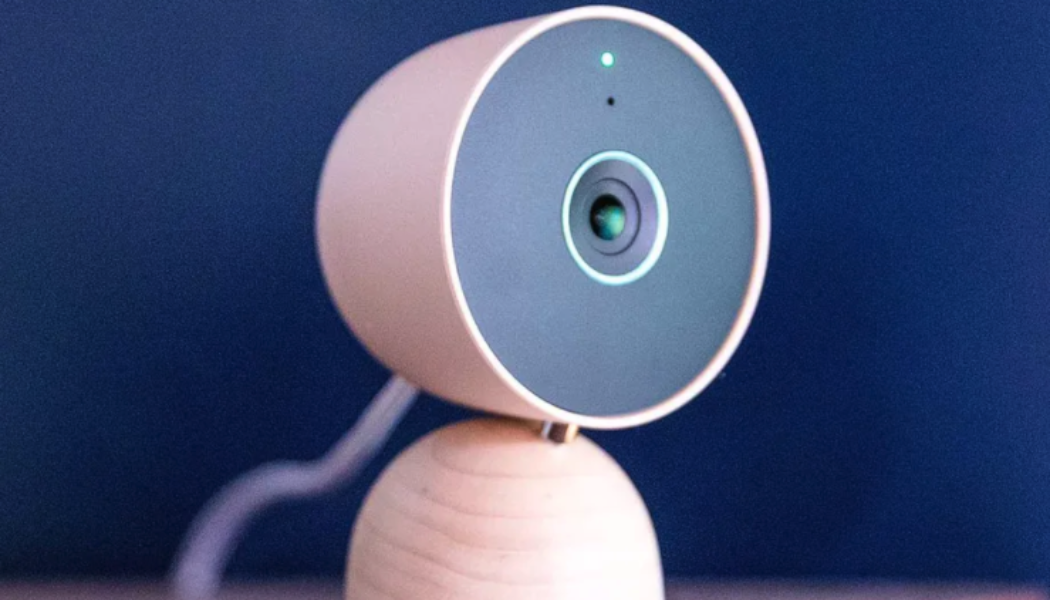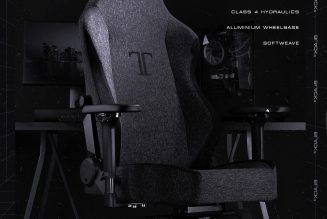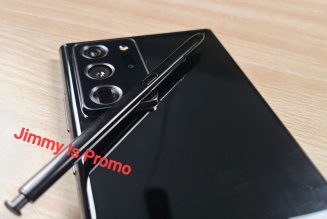Indoor cameras are an awkward category. It’s hard to find a way to fit one into your home without feeling like Big Brother is watching you. My family hates having them in the house and only grudgingly lets me set them up to test as long as I take them down as soon as possible. Despite my assurances that the devices are set to not record when we’re home — they just don’t quite believe me. And they’re not alone.
Making a camera prettier so it blends in better with your home — as is the case with Google’s newest $100 Nest Cam (indoor) — may feel like a step in the right direction, but it really isn’t. In the end, it’s still a big black eye staring at you — no matter how attractive its exterior casing.
If you’re going to have an indoor camera, you need a really good reason. Security — while a valid reason for some — can be just as easily achieved with a well-placed outdoor camera (and be much less likely to catch you in your knickers by accident). Safety — checking to see if you left the stove on or looking in on the living room when your smart smoke alarm goes off is fine in theory — but, in reality, requires a camera in every nook and cranny where something could conceivably go wrong (which is the theory behind Ring’s new Always Home Cam). Ultimately, the most popular reason to use indoor cameras is to check in on pets and kids.
As a pet / child cam, the Nest Cam — which is part of Google’s new lineup of security cameras that includes a doorbell, an indoor / outdoor camera, and a floodlight cameras — does a nice job. Its best feature is its on-device processing that delivers snappy (and free) smart alerts to tell you whether it’s a cat or your child that just snuck into the kitchen before dinner.
With three hours of free event playback, you can see what went on without having to pay a monthly subscription fee (as long as you catch the alert within that three-hour window), and thanks to some local storage, the camera can record an hour’s worth of events if the internet goes down. If you spring for Google’s Nest Aware plan (starting at $6 a month), you can add the excellent Familiar Faces feature (which will tell you which child snuck into the kitchen — but sadly not which cat) and enable 24/7 recording (a handy feature if you want to see what your dog did all day or “film” a party or event at your home).
Unfortunately, the Nest Cam is not as good at either of these things as Nest’s previous camera — the $299 Nest Cam IQ Indoor. It had the option of sound alerts to detect a dog barking and people talking and could record a timelapse — which was a fun use of 24/7 recording. Granted, it was $200 more expensive and quite large and bulky in comparison to the diminutive newer model, but I’m not usually a fan of making smart home devices dumber or less capable.
Perhaps Google thinks the fancy 4K sensor-powered Nest Cam IQ with a built-in Google Assistant was overkill for the average person, and maybe it was. But that doesn’t explain why the newer Nest Cam with its 1080p, 2-megapixel camera has significantly worse video quality than the older version, beyond just lower resolution. Google said it ditched the 4K sensors to help preserve bandwidth (its wired cameras are notorious data hogs), but based on my testing, competitors’ cameras that cost under $50 have better video quality than this camera. They don’t look as pretty, though.
:no_upscale()/cdn.vox-cdn.com/uploads/chorus_asset/file/22946134/1D84FD79_B8C7_4664_B453_9C26AA1DD7D1.JPG)
:no_upscale()/cdn.vox-cdn.com/uploads/chorus_asset/file/22946137/B8D02405_CCDE_44D5_A864_9D54EF84C214.JPG)
In my testing, I compared the Nest Cam side-by-side with a $36 Wyze Cam V3, and the Wyze Cam produced much better quality images. The images from the Nest Cam were over-saturated, dark, and regularly had a lot of artefacting. They also looked like I was viewing my home through rose-tinted glasses. I tested two units because Google said it has identified an issue with some cameras where the auto-white balance is out of whack, causing the rosy tint. But both cameras I tested had the same issue. Google says it’s rolling out a fix next month, and I’ll re-test and update this review if I see any changes.
I also did a comparison with the Nest Cam battery, which is Google’s new indoor / outdoor camera that has the option of being wired. It didn’t struggle as much with the contrast as the wired version, but its indoor images were not as crisp and clear as those it captured outdoors.
:no_upscale()/cdn.vox-cdn.com/uploads/chorus_asset/file/22946144/3405C8C4_A7AC_4902_BAAE_89C8549CB06F.JPG)
:no_upscale()/cdn.vox-cdn.com/uploads/chorus_asset/file/22946160/6719EAD3_08AB_4F13_8DDC_A5AB1FB4DBDF.JPG)
Night vision on the Nest Cam was more successful — and definitely not rose-tinted. The standard black and white video captures up to 15 feet at night, which is more than you’d need in most home environments. The 6x digital zoom (a step down from the Nest Cam IQ’s 12x) gave me enough pixels to zoom in on faces and make them out clearly.
Of course, video quality isn’t everything when it comes to a smart home security camera. It’s no good having top-quality video if you can’t access it quickly on a useable app. Design and build are also factors, as are privacy features, audio quality, and smart home integrations.
:no_upscale()/cdn.vox-cdn.com/uploads/chorus_asset/file/22928575/jtuohy_211012_4809_vrt.jpg)
The Nest Cam has a nice design and the unique option of four color choices — white, grey, blue, and pink. It’s also surprisingly small — the base is almost as big as the camera, and the two together top out at just under four inches. A maple wood base on the pink camera is a nice decor touch, but I didn’t like the limited amount of flexibility the camera had on the mount (which it’s fixed, too). While you can mount it on the wall, as well as sit flat on a table or shelf, it only tilts up and down a few degrees, making it tricky to position perfectly in some situations. You can move it side to side almost a complete 360 degrees, but the fixed cord will stop you from going all the way around.
When the camera is recording, a small LED on the camera glows green, and this can’t be disabled. If someone is viewing the live stream, the LED flashes. This is a good privacy feature — although not enough to assuage the fears of my family. Ultimately, a physical hardware shutter is the only thing that will make most people feel comfortable, and I’m surprised Google didn’t offer this option.
:no_upscale()/cdn.vox-cdn.com/uploads/chorus_asset/file/22928574/jtuohy_211012_4809_6.jpg)
The Nest Cam has full-duplex two-way audio, which worked well in my testing. I could carry on a conversation as if it were a telephone call — even talking over each other and still being able to hear. That experience is much better than a lot of indoor security cameras where the interaction is more like a walkie-talkie, and lag time can be really frustrating.
The Nest Cam is also fast at sending alerts. Notifications for motion, animals, people, and vehicles (there’s not a lot of traffic in my living room, to be fair) arrived on my iPhone 13 just 1 to 3 seconds after the action. This would give me plenty of time to react — however, the Google Home app takes up to 10 seconds to pull up the footage. For just quickly viewing footage, the Nest Hub smart displays are faster than the app, pulling up a feed within a couple seconds, but you can’t interact with the feed or talk to someone through the Hub.
This brings me to my other issue with the Nest Cam: the Google Home app. You have to use it with this camera; it won’t work with the Nest app. I have used and loved the Nest app for years, and its ability to quickly scroll through footage and recorded events all on one page is something I really miss here. With the Home app, you have to tap into two or three different screens to see clips, live footage, or a timeline, and the timeline scroll is very slow (Google has said it’s fixing this).
While the accuracy of alerts in the newer Nest Cams is far superior to the older ones — which would routinely ping me 35 times in the middle of the night because a spider was building its web on the camera — digging in the Settings section of the Google Home app to figure out how to set up an activity zone is almost as tiresome. But Google has clearly indicated that it plans to migrate everything from the Nest app, so we’ll all have to struggle on in the Home app.
:no_upscale()/cdn.vox-cdn.com/uploads/chorus_asset/file/22928553/jtuohy_211012_4809_2.jpg)
There is simply too much going on in the Home app to make using it as a security camera hub a pleasant experience. And while the camera interface has some nice touches (like seeing a live feed of all your cameras when you open it), it’s too fiddly and requires too many taps and clicks and scrolls to get to the footage you want.
It’s also missing some features from the Nest app, including scheduling your cameras to come on and off at certain times. Instead, there’s a Routine that will control them based on your location, but that’s not helpful if you want them on at night while you are sleeping. There is an option to only get notified when the camera is on and no one is home, which helps a bit, but scheduling doesn’t feel like a big ask.
You also can’t use Google’s Nest cameras in any ecosystem other than Google Home. The old Nest cameras worked with Amazon Alexa and, more recently, SmartThings, but these are Google only. If you are running a Google smart home, that won’t be an issue — these cameras integrate nicely with any other Google-compatible device. Except for in one odd way — you can’t view your camera feed on a Chromecast-enabled TV. Google says it’s working on adding the feature, as well as a web interface, which was a feature of Nest cameras.
While I do appreciate Google’s efforts to make smart home devices more suited to our home, and the local processing is an excellent step forward, I don’t like seeing devices lose functionality. Google still has a lot of work to do with the Nest Cam, and that’s a shame because Nest’s indoor cameras were the industry gold standard. Now, in far too many respects, they’re playing catch up.
Photography by Jennifer Pattison Tuohy / The Verge









